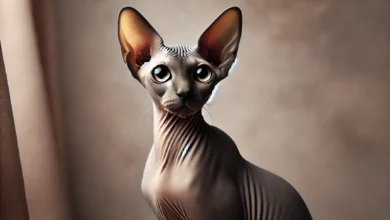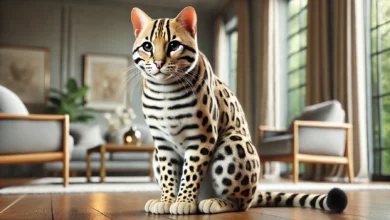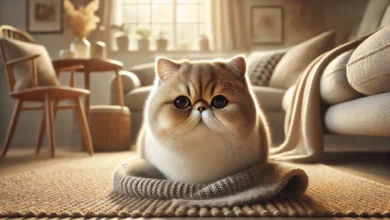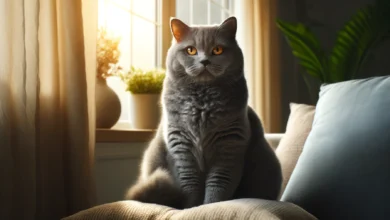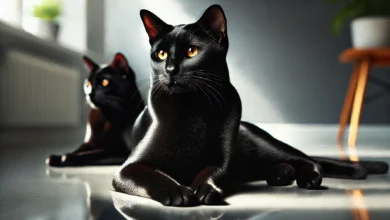Exploring Tiffanie Cats: Semi-Longhair Elegance
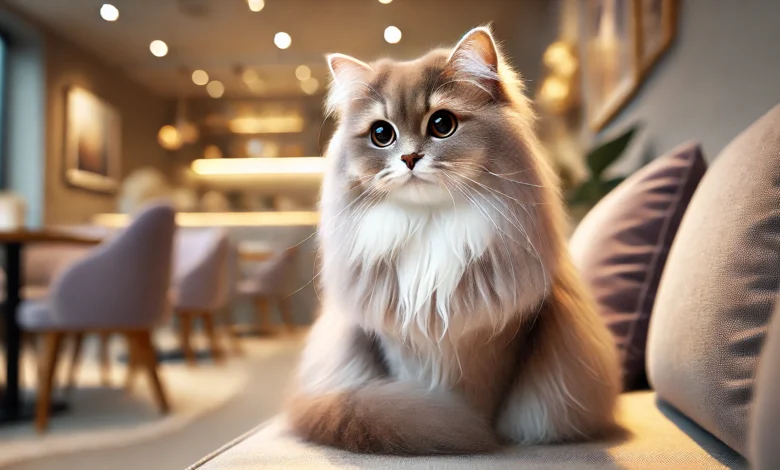
The Tiffanie cat breed is handsome and graceful, with semi-longhair coats and affectionate natures.
For that reason, many people love them because they combine beauty and good character.
But what makes the Tiffanie cat special?
Are you interested in their history, physical traits, or how to care for them?
Well, you’re in the right place.
In this article, we will explore everything you need to know about Tiffanie cats—from their intriguing origin and development to everything in between.
This guide is bound to provide an in-depth understanding of these unique felines, whether you’re considering adopting one or simply enjoy learning about different cat breeds.
Table of Contents
The Origins of the Tiffanie Cat Breed
The origins of the Tiffanie breed are diverse and unique.
This breed was developed alongside the creation of a domestic cat that boasts the luxurious semi-longhair coat seen today.
The roots of the Tiffanie cat date back to the 1980s, when breeders in the United Kingdom initiated an experimental breeding program.
This program involved crossbreeding Burmese cats with Chinchillas or other long-haired cats to produce a cat with a semi-longhair coat and the charming personality of certain Asian breeds.
The result was the first Tiffanie kittens, which quickly gained fame for their remarkable beauty.
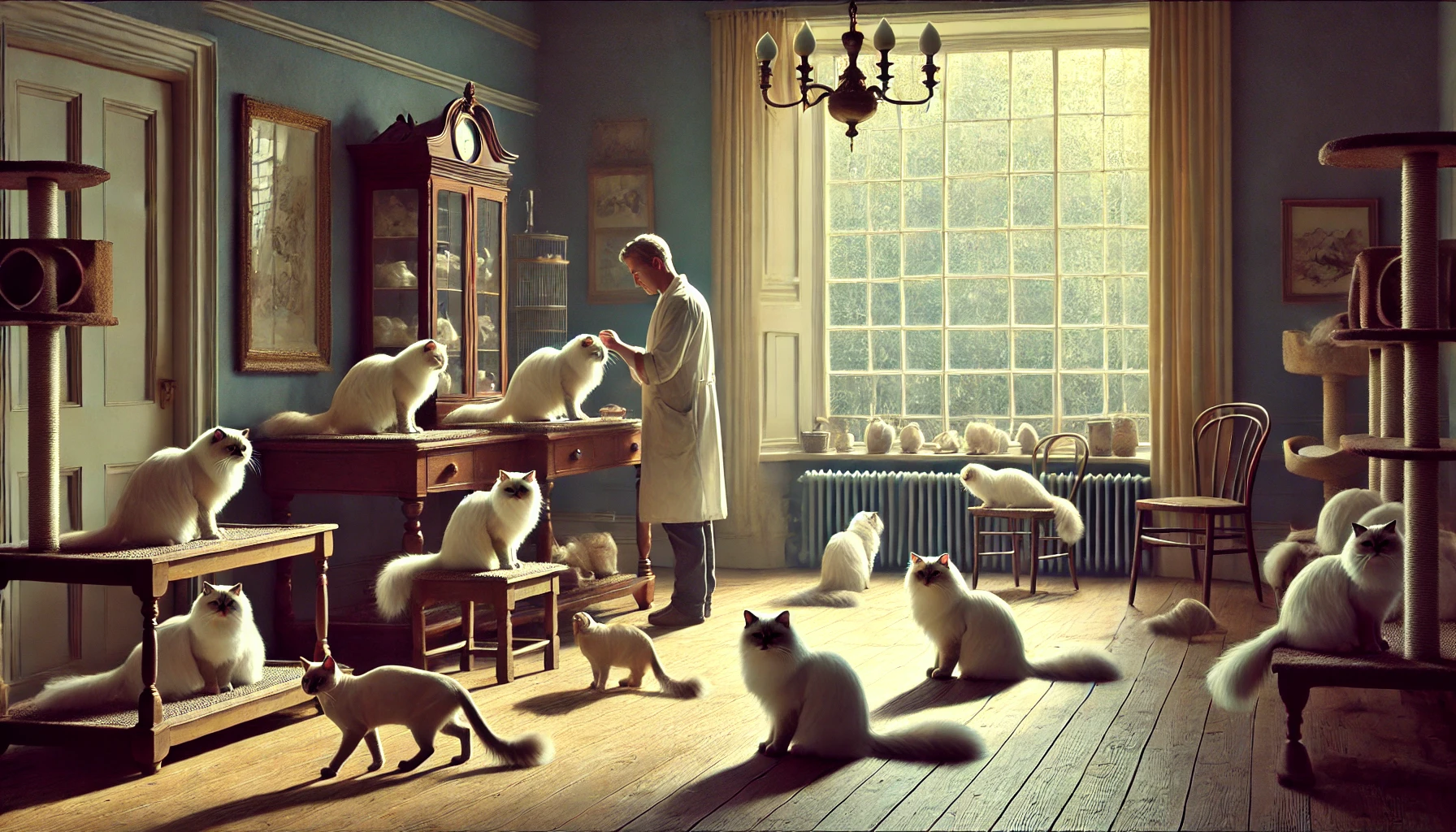
Historical Background
The Tiffanie cat breed is relatively young compared to other breeds that have long, ancient histories.
Its development began in the 1980s, when breeders aimed to combine the best traits of the Burmese and the Chinchilla Persian.
These two breeds were chosen for their contrasting characteristics: the Burmese for their affectionate and playful nature, and the Chinchilla for their long, flowing coats.
The result was a semi-longhaired breed that blended the amiability of the Burmese with the elegance of the Chinchilla.

How the Tiffanie Breed Was Developed
Originally, breeders focused on perfecting the texture and length of the Tiffanie’s coat while ensuring the breed remained healthy in terms of its genetic lineage.
Over time, this breed was recognized by UK cat breeding associations, and the Tiffanie cat became known for its distinct features.
This development took many generations of crossbreeding, with careful selection to maintain the energetic personality of the Burmese while preserving the luxurious fur of the Chinchilla.
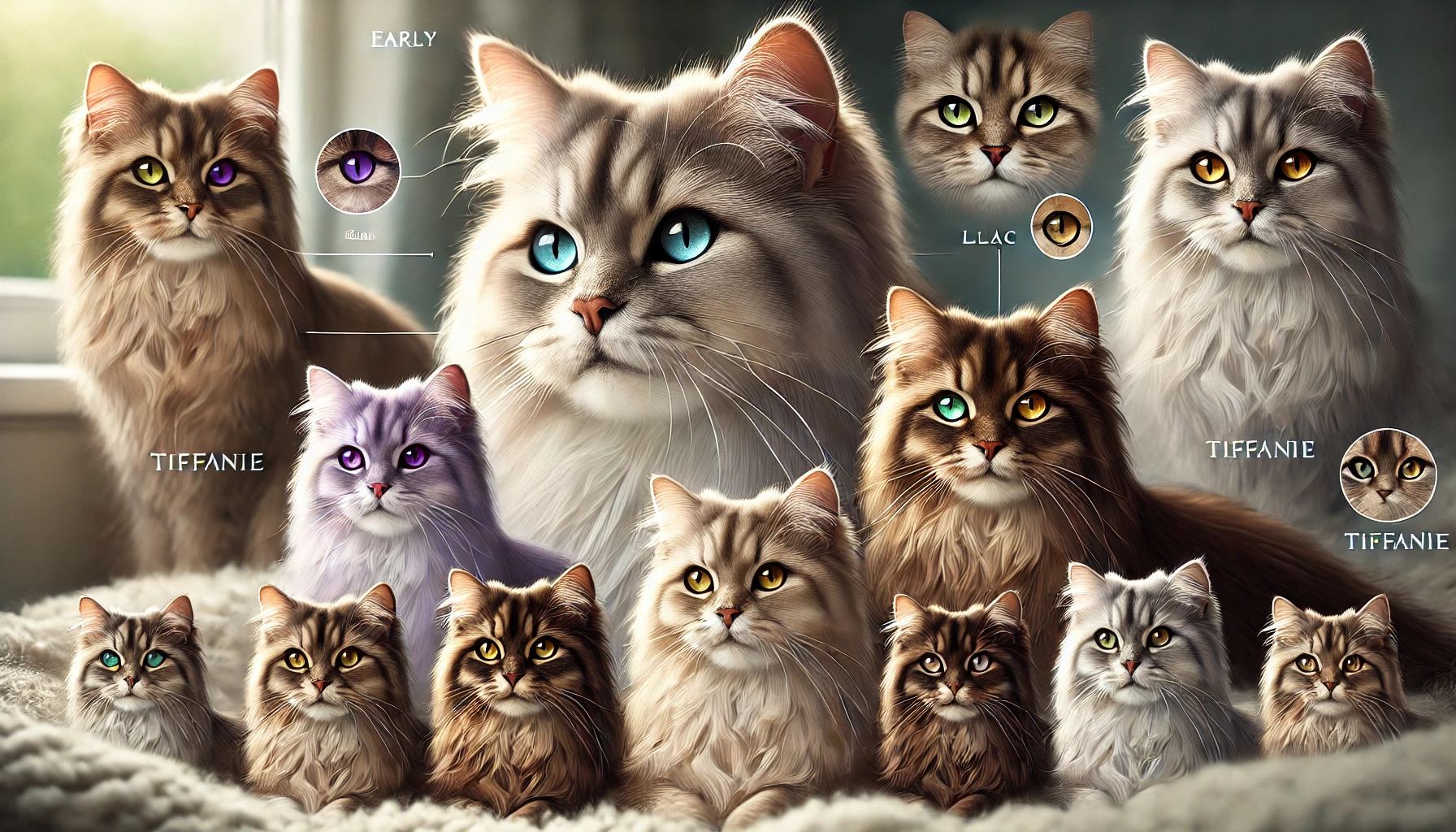
Distinct Features of Early Tiffanies
The early Tiffanie cats stood out with their unique coat colors, patterns, and eye colors.
One of the most striking features was their semi-longhaired coat, which gleamed beautifully in the light.
This coat required careful grooming to maintain its beauty.
Despite their aristocratic appearance, Tiffanie cats were always known for their warm and calm temperament, making them ideal for families and individuals alike.
Over time, the Tiffanie breed has become recognized and loved for its beauty and gentle personality.
The Tiffanie breed originated from a crossbreeding program in the 1980s, resulting in semi-longhaired, affectionate cats with a unique history.
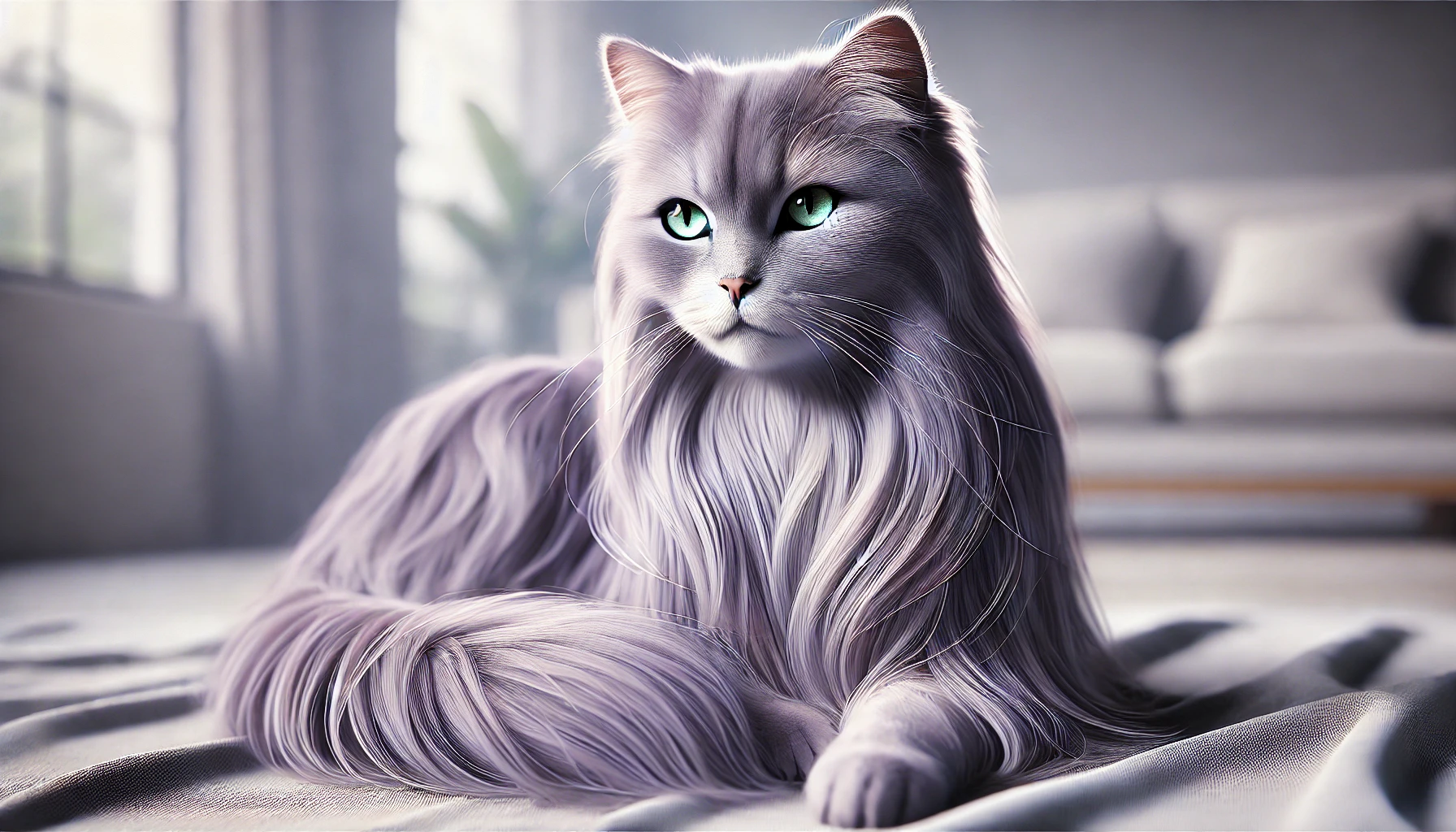
Physical Characteristics of Tiffanie Cats
Tiffanie cats are truly one of the most elegant felines, with their semi-longhaired coat, which adds uniqueness to their appearance in any environment.
These cats feature both the characteristics of Burmese and Chinchilla cats, making them stand out.
Not only do the physical attributes of these felines enhance their appearance, but they are also important in their grooming and maintenance.
If you are considering adopting a Tiffanie cat, there are some distinct physical features that define this breed.
How special it is!
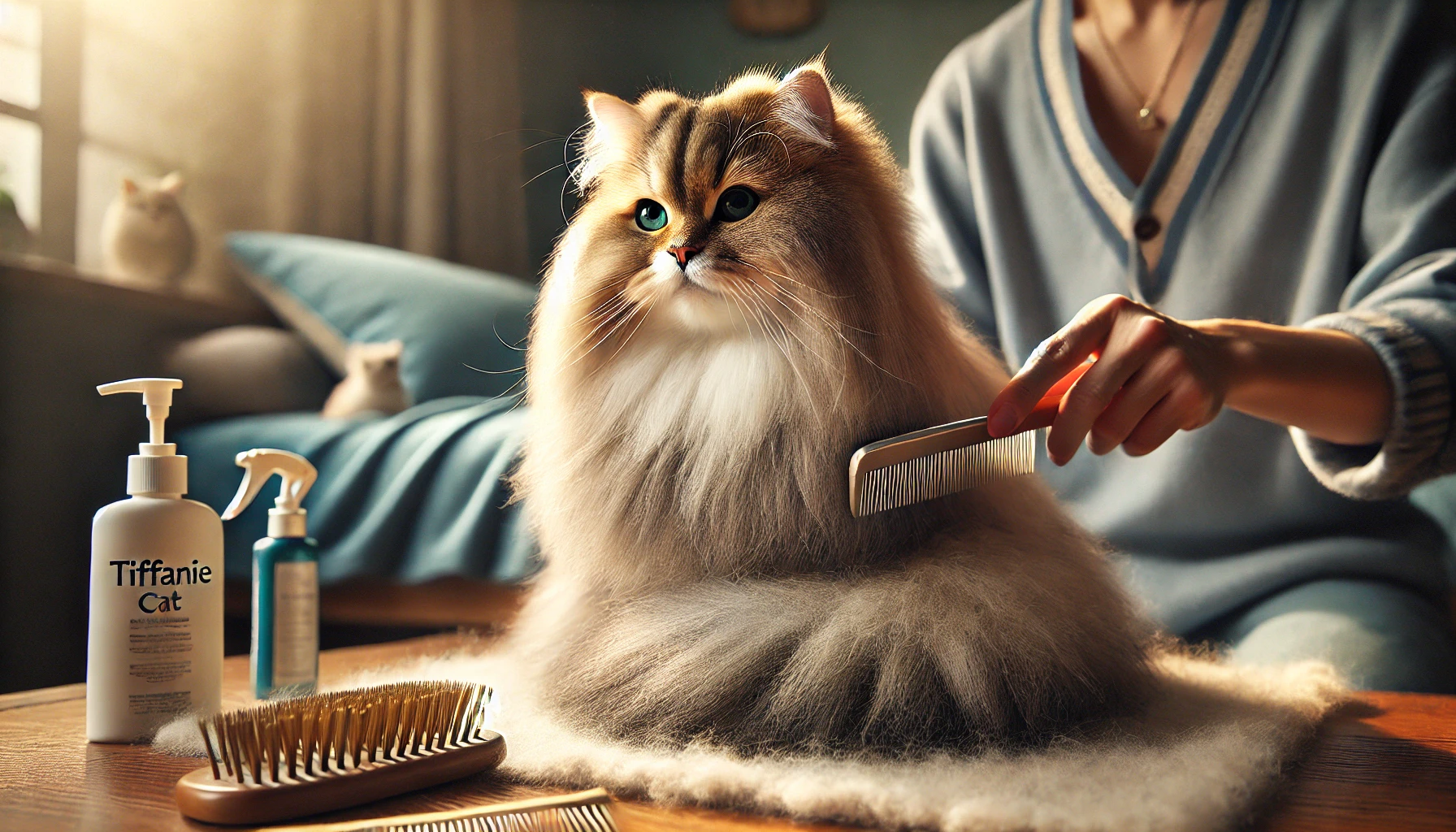
Semi-Longhair Coat: Care and Grooming
Perhaps the most striking feature of the Tiffanie is its coat.
Semi-long and soft, it is often described as silky and luxurious to the touch.
While the coat does not easily mat, as many long-haired breeds do, regular grooming is necessary to keep the coat in its best shape and health.
Below are a few grooming tips to help keep the coat of a Tiffanie cat beautiful:
- Regular brushing: Avoid tangles and mats by grooming your Tiffanie cat at least once a week. Semi-long hair demands detangling using a wide-tooth comb or a slicker brush.
- Seasonal shedding: This breed sheds heavily during certain times of the year, such as spring and fall. Additional grooming during these periods will not only reduce loose hair but also help keep the coat in top condition.
- Watch out for knots: Even though Tiffanies’ coats are relatively easy to care for, always check for knots, particularly behind the ears and under the belly where the fur is thicker.
- Cleanliness of the coat: While regular baths are not always necessary, periodic washing with a cat-friendly shampoo can help keep the coat shiny and soft.
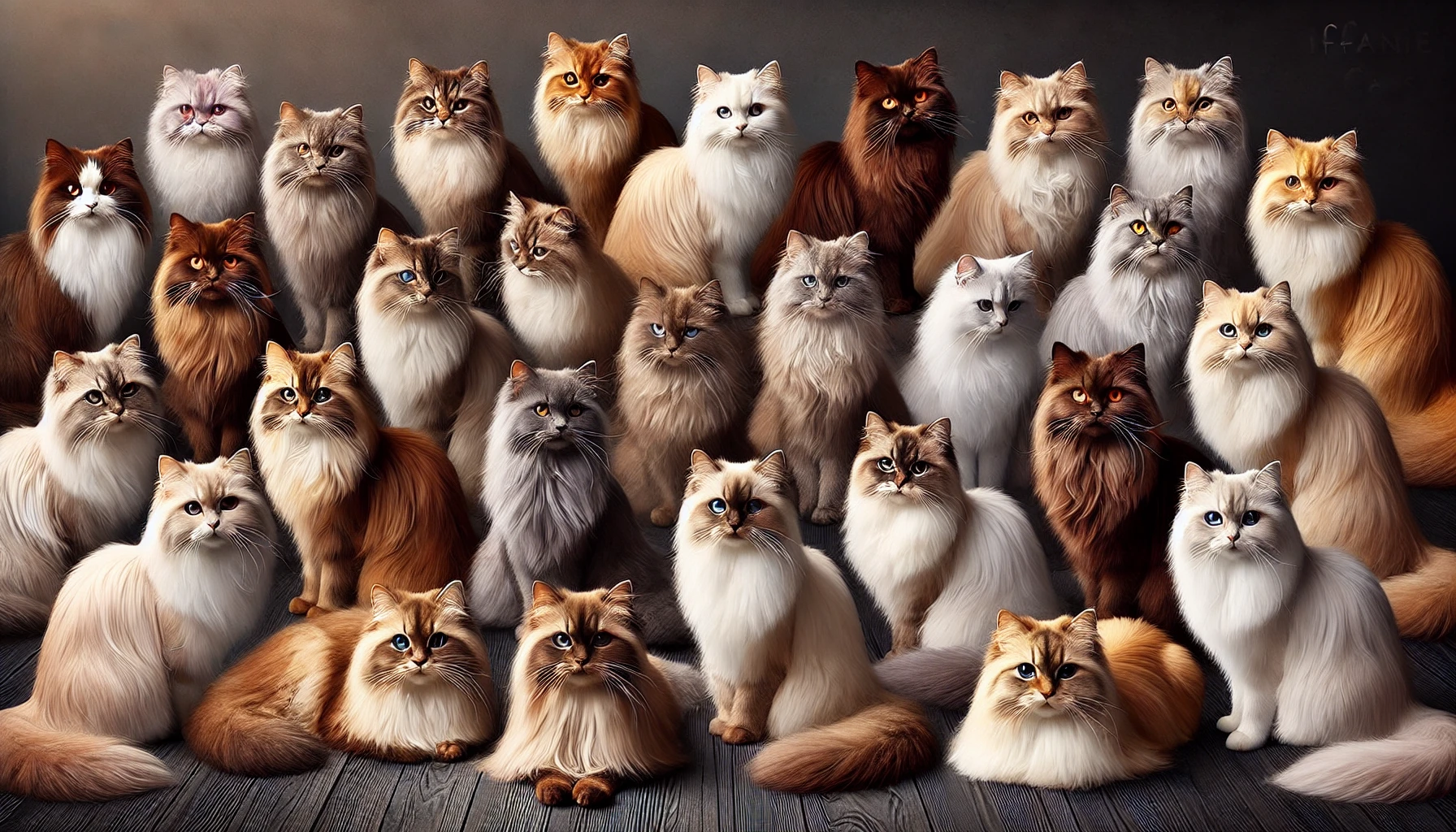
Color Patterns and Variations
Tiffanie cats come in a variety of attractive colors and patterns that add to their beauty.
Their coats can feature solid colors, shaded, or tipped patterns, making no two Tiffanies alike.
Common colors found in Tiffanie cats include:
- Brown: Deep and rich brown, contrasting beautifully with their silky fur.
- Blue: A soft, muted tone that gives them a cool and calming appearance.
- Chocolate: A warm, sumptuous color that enhances the breed’s elegance.
- Lilac: A delicate and rare color, highly sought after by breeders and fanciers alike.
- Red or Cream: Lighter colors that provide a soft, yet charming look.
Many Tiffanies also display a shaded or tipped pattern, where the undercoat is lighter and the tips of the hair are darker, giving depth and texture to their coat.
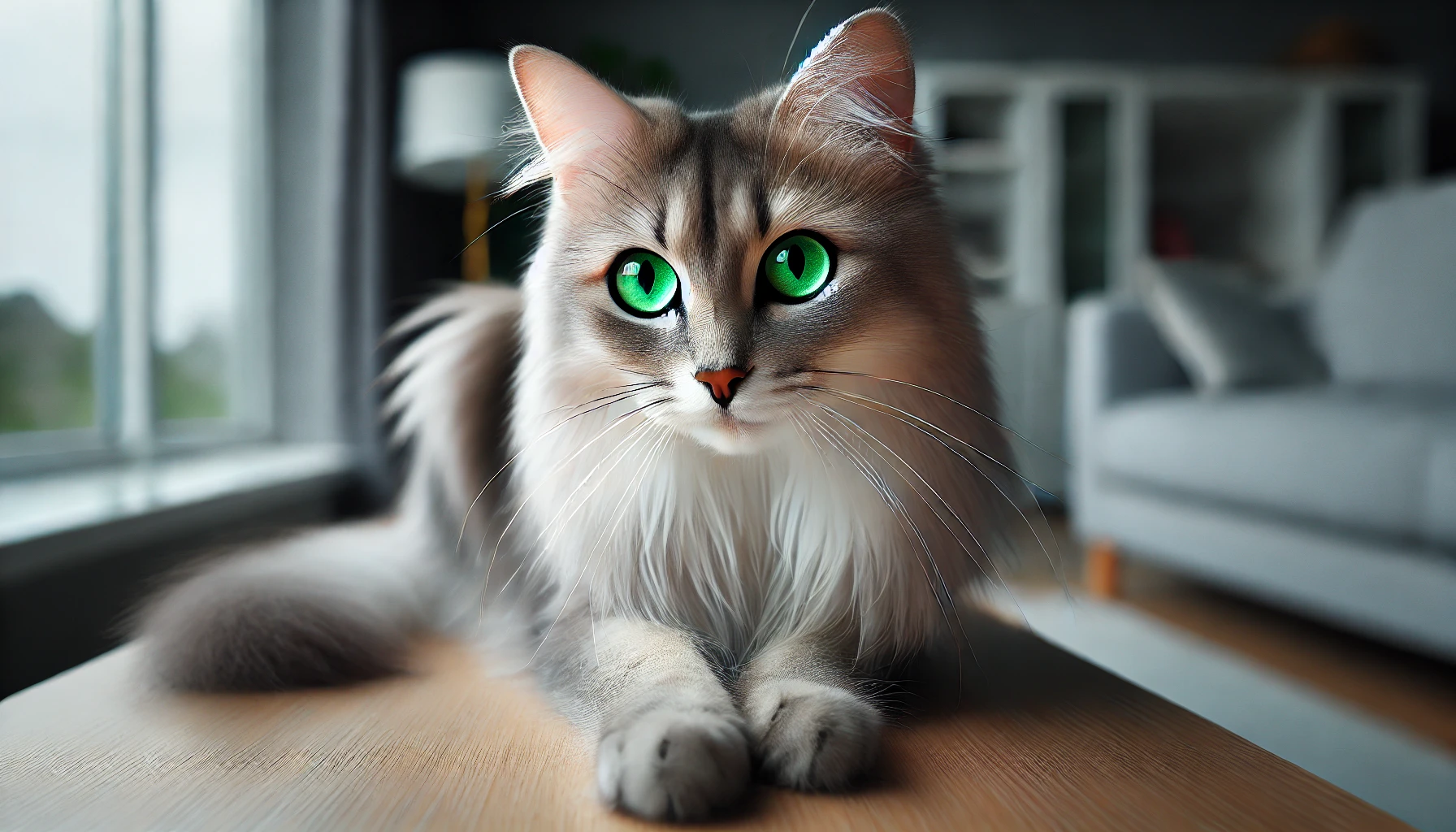
Eye and Body Shape
The eyes of Tiffanie cats are striking and add to their overall charm.
Their large, almond-shaped eyes range in color from yellow to green, depending on their coat color.
These beautifully contoured eyes, combined with their silky fur, make Tiffanie cats one of the most stylish cat breeds.
In terms of body shape, Tiffanies are medium-sized with a slender yet muscular build.
Their limbs are well-proportioned to their body, allowing them to move with grace and agility.
Tiffanie cats combine Burmese and Chinchilla traits, featuring semi-longhaired coats that require regular grooming and care.
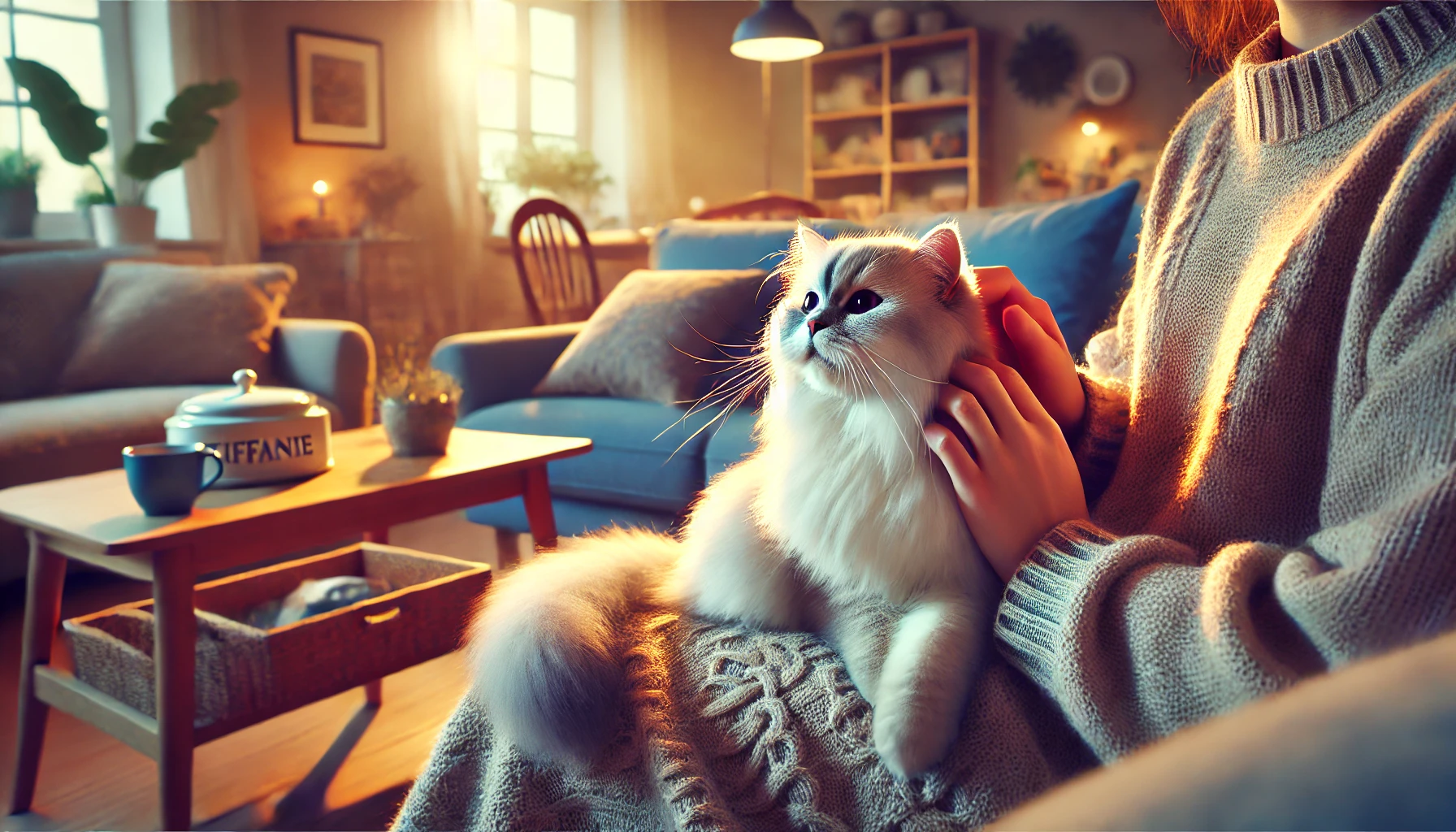
Tiffanie Cats: Personality and Temperament
Tiffanie cats are not only the epitome of physical beauty, but they also possess a wonderful personality and temperament.
These affectionate, gentle, and social cats are great companions for both families and individuals.
Their temperament combines the best traits from their Burmese and Chinchilla ancestors, making them well-balanced and appealing to a variety of people.
Understanding your Tiffanie cat’s character is important, especially if you’re considering bringing one into your home.
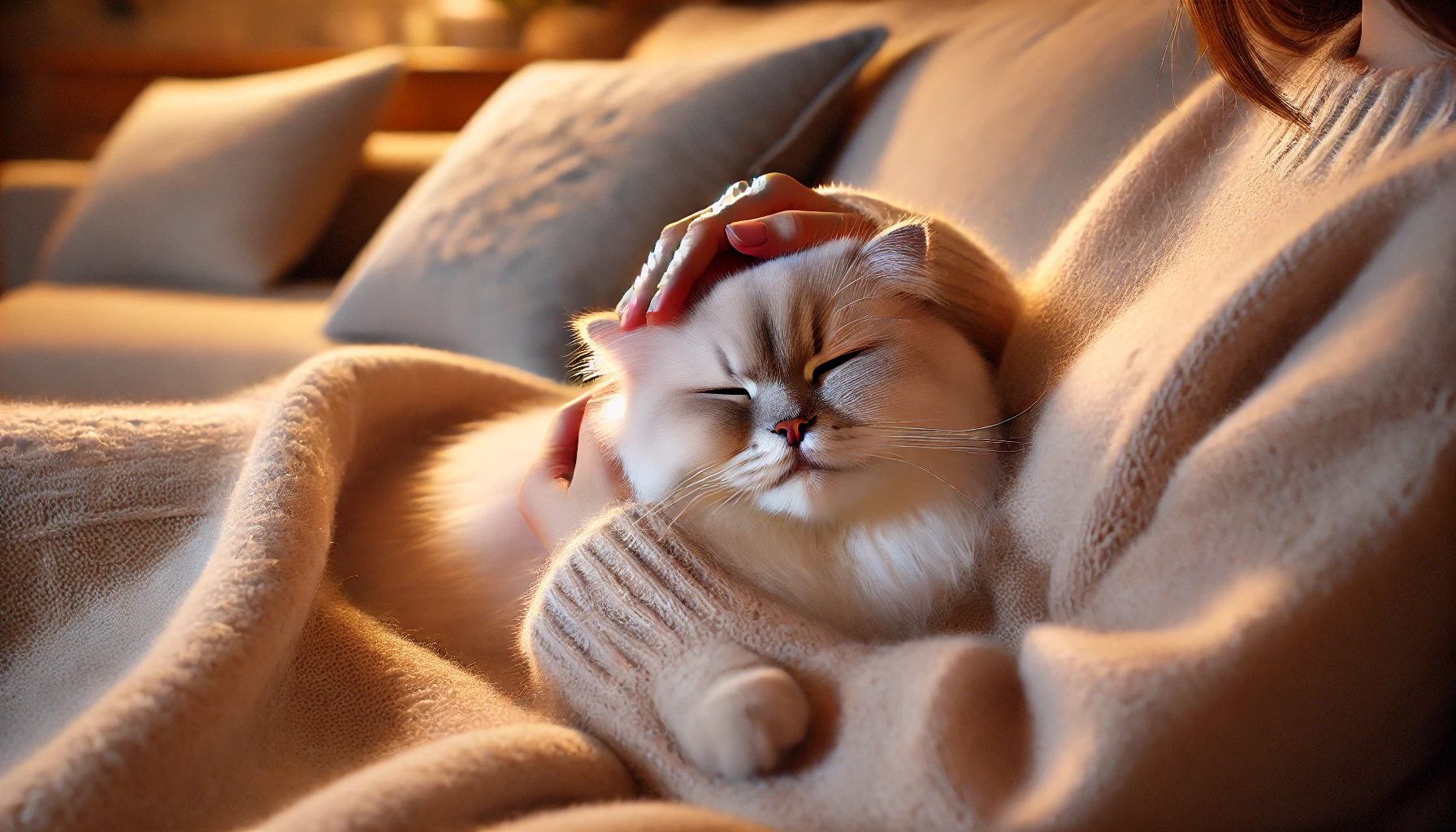
Gentle and Affectionate Nature
Perhaps one of the most defining traits of the Tiffanie breed is their affectionate nature.
They are highly people-oriented and love forming strong bonds with their human companions.
Tiffanies enjoy being around people so much that they may follow their owners around the house or curl up in their laps.
Due to their gentle disposition, they are not aggressive, making them suitable for families with children or other pets.
If you’re looking for a cat that will greet you at the door, seek your company throughout the day, and enjoy plenty of attention, the Tiffanie cat is the perfect choice.
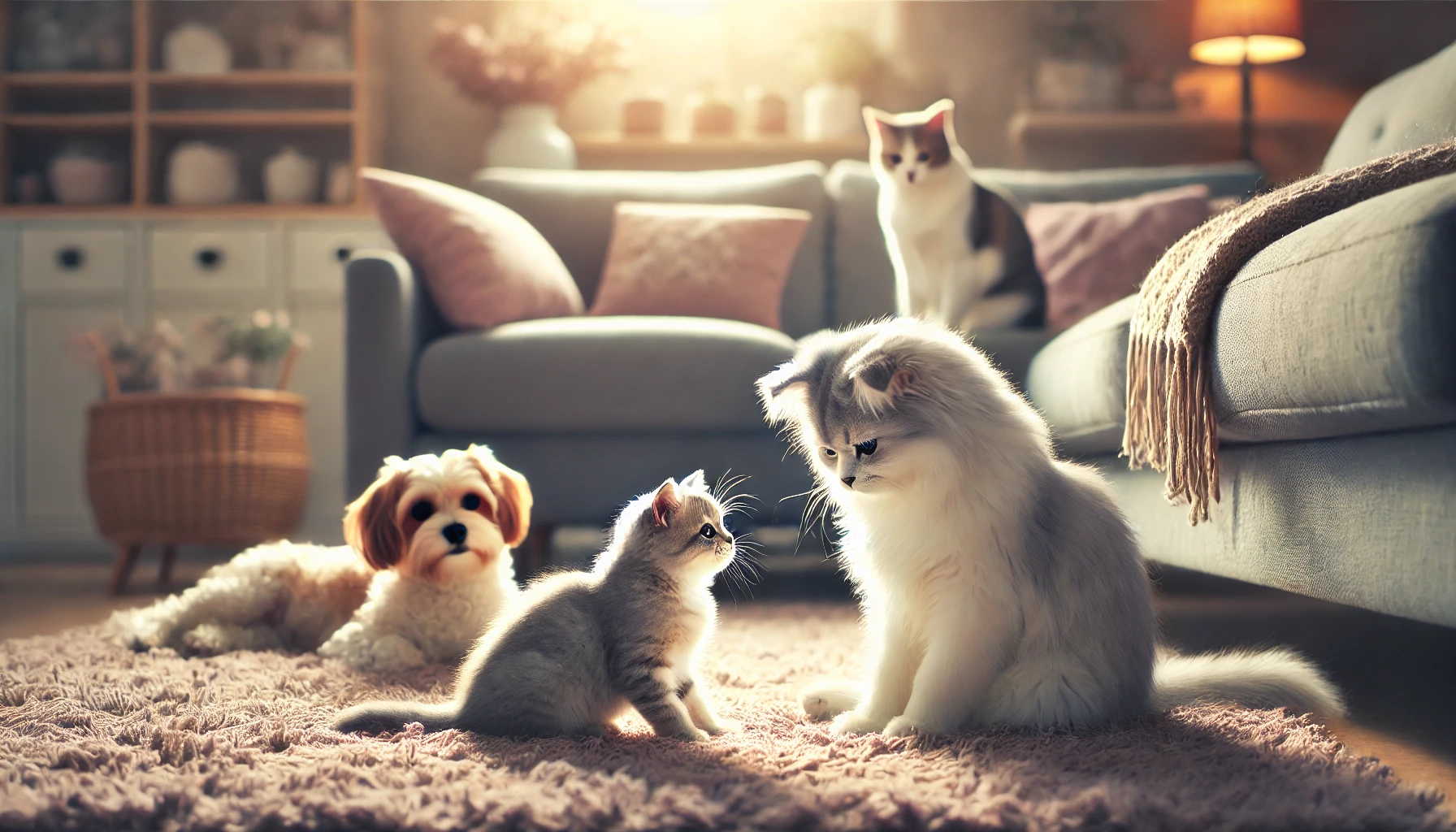
Interaction with Other Pets
Tiffanie cats generally get along well with other pets, whether cats or dogs.
Their laid-back nature makes them compatible with multi-pet households.
If introduced properly, Tiffanies can often be found playing with or lounging alongside their companion animals.
However, it’s important to ensure that the introduction is done gradually and that all pets feel comfortable and safe during the process.

Ideal Home Environment for Tiffanies
A perfect home for a Tiffanie cat is one where they receive ample attention and love.
Tiffanies thrive in homes where they are part of the family and have regular interaction with their owners.
They adapt well to both busy households and quieter environments, as long as they are not left alone for long periods.
These cats enjoy having plenty of toys and places to explore, but at the end of the day, they prefer being close to people.
Tiffanies are a great fit for families with children or other pets, or for individuals who can devote quality time to them.
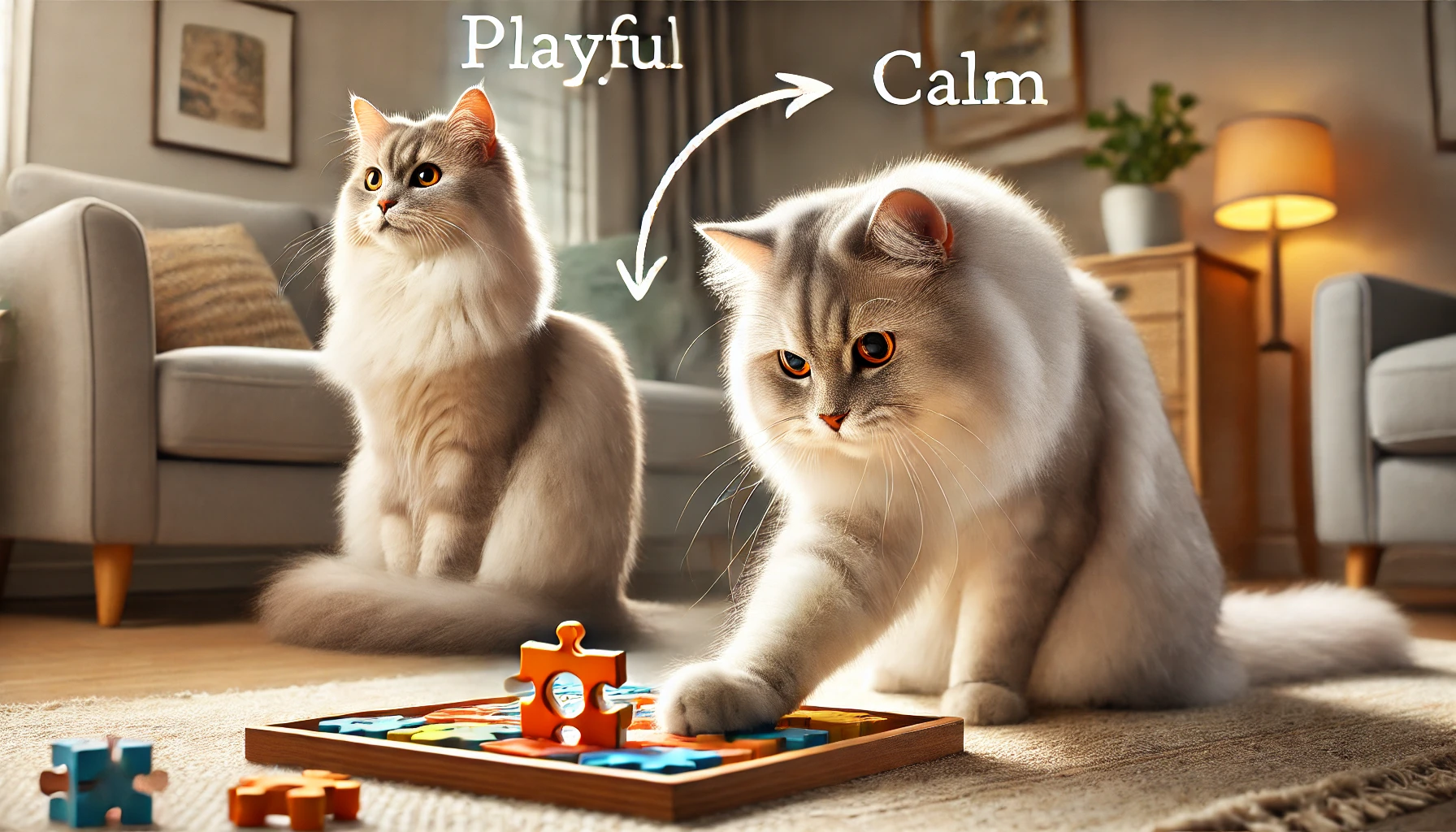
Behavioral Traits
Playful yet laid-back, Tiffanie cats strike a great balance between active play and relaxation.
They enjoy playing vigorous games, but are equally content to lounge around and observe their surroundings.
These intelligent cats may enjoy puzzle toys or learning basic tricks, which helps stimulate their minds.
While playful, they are not overly demanding and can easily balance their bursts of energy with quiet moments.
Their gentle temperament makes them easy to train and manage, as they respond well to positive reinforcement.
Tiffanies are known for their gentle and affectionate nature, making them excellent companions for families and individuals alike.
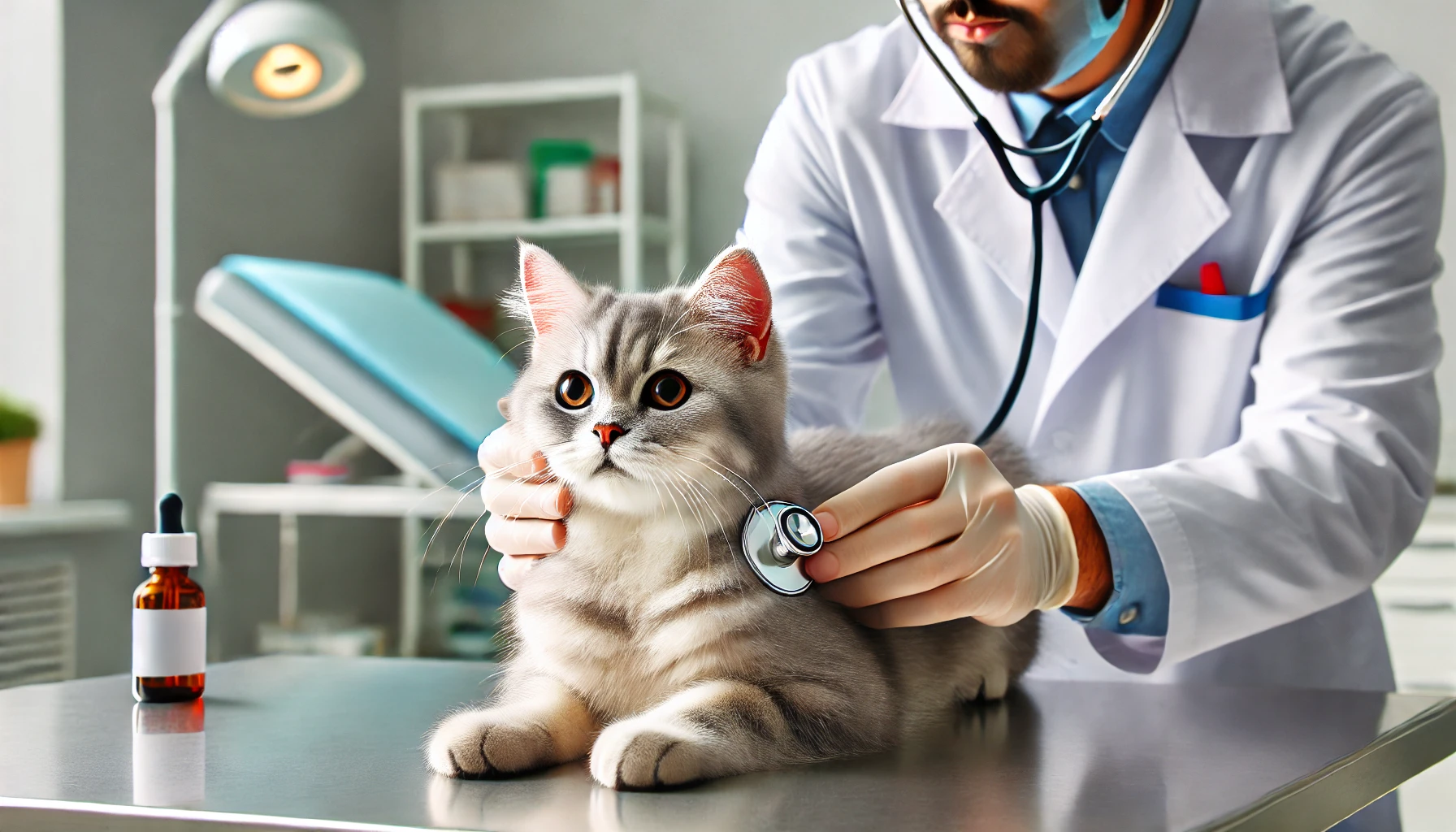
Tiffanie Cat Health Considerations
Generally, the Tiffanie breed is healthy, but like all breeds, there are particular health concerns that you should be aware of.
Since this breed traces its lineage back to a genetic mix, the diversity from its ancestry in Burmese and Chinchilla cats tends to further safeguard the breed.
However, this does not make them entirely resistant to health problems.
To keep your Tiffanie cat living a long and healthy life, it is important to understand common health problems and how to best address them.
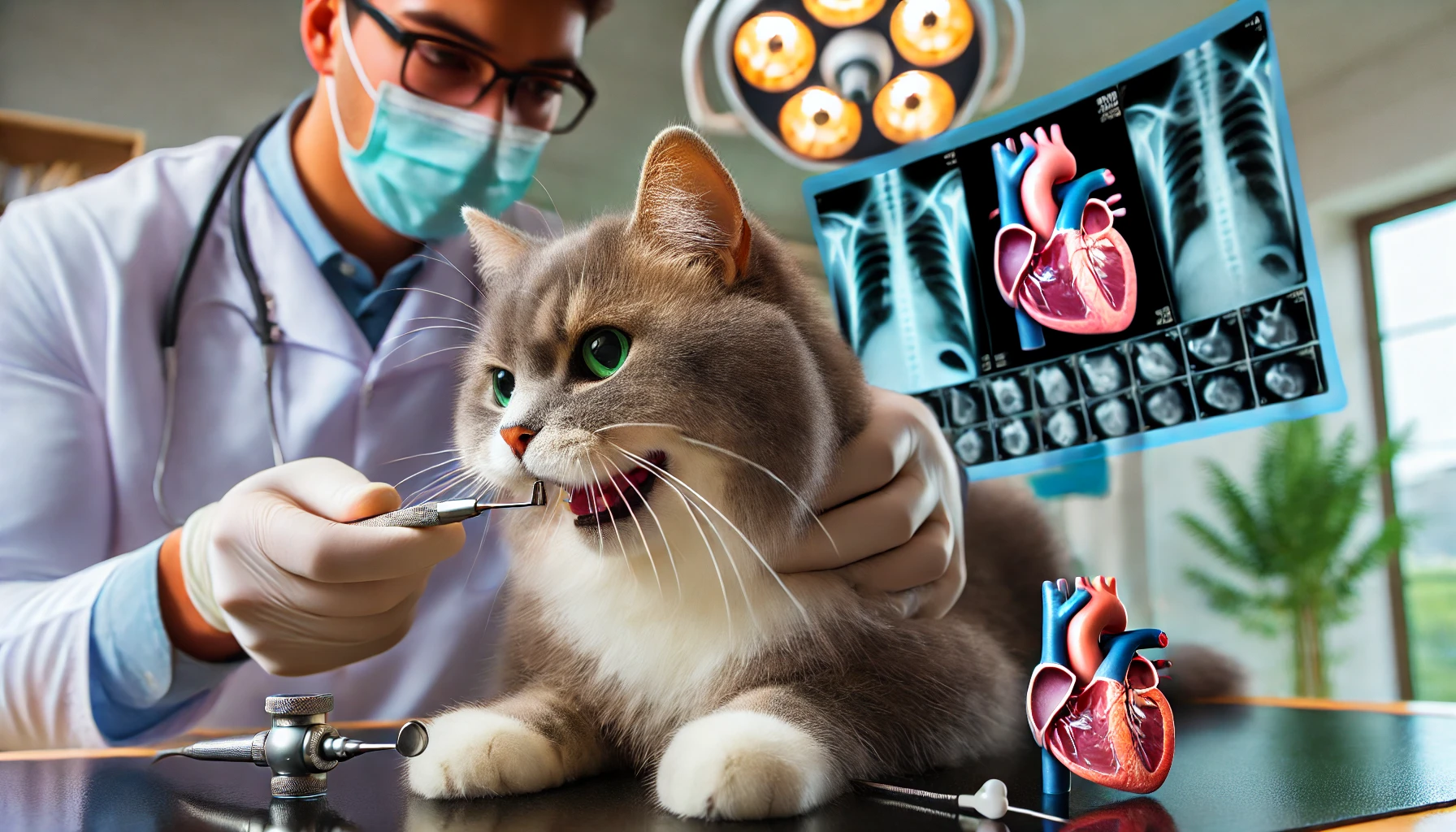
Pools of Common Health Issues
Though Tiffanie cats are not predisposed to many specific genetic diseases, there are a few health issues they may encounter.
Being aware of these problems and scheduling regular check-ups with a veterinarian can help in the early detection of any potential issues.
Some common health problems in Tiffanie cats include:
- Dental disease: Like many breeds, Tiffanie cats can be prone to dental problems such as gingivitis and tooth decay. Regular tooth brushing and dental check-ups can help prevent these issues.
- Polycystic kidney disease (PKD): This genetic disease causes cysts to form on the kidneys and may lead to kidney failure. While more common in Persian-related breeds, it can sometimes occur in Tiffanies. Genetic testing can determine if this condition runs in your cat’s lineage.
- Hypertrophic cardiomyopathy (HCM): This is a heart condition that thickens the heart muscle. Regular heart screenings by a veterinarian can help detect this condition early.
- Obesity: Some Tiffanie cats tend to become overweight, especially when their diet and exercise routine is not properly managed. Obesity can lead to several other health problems, such as diabetes and joint issues.
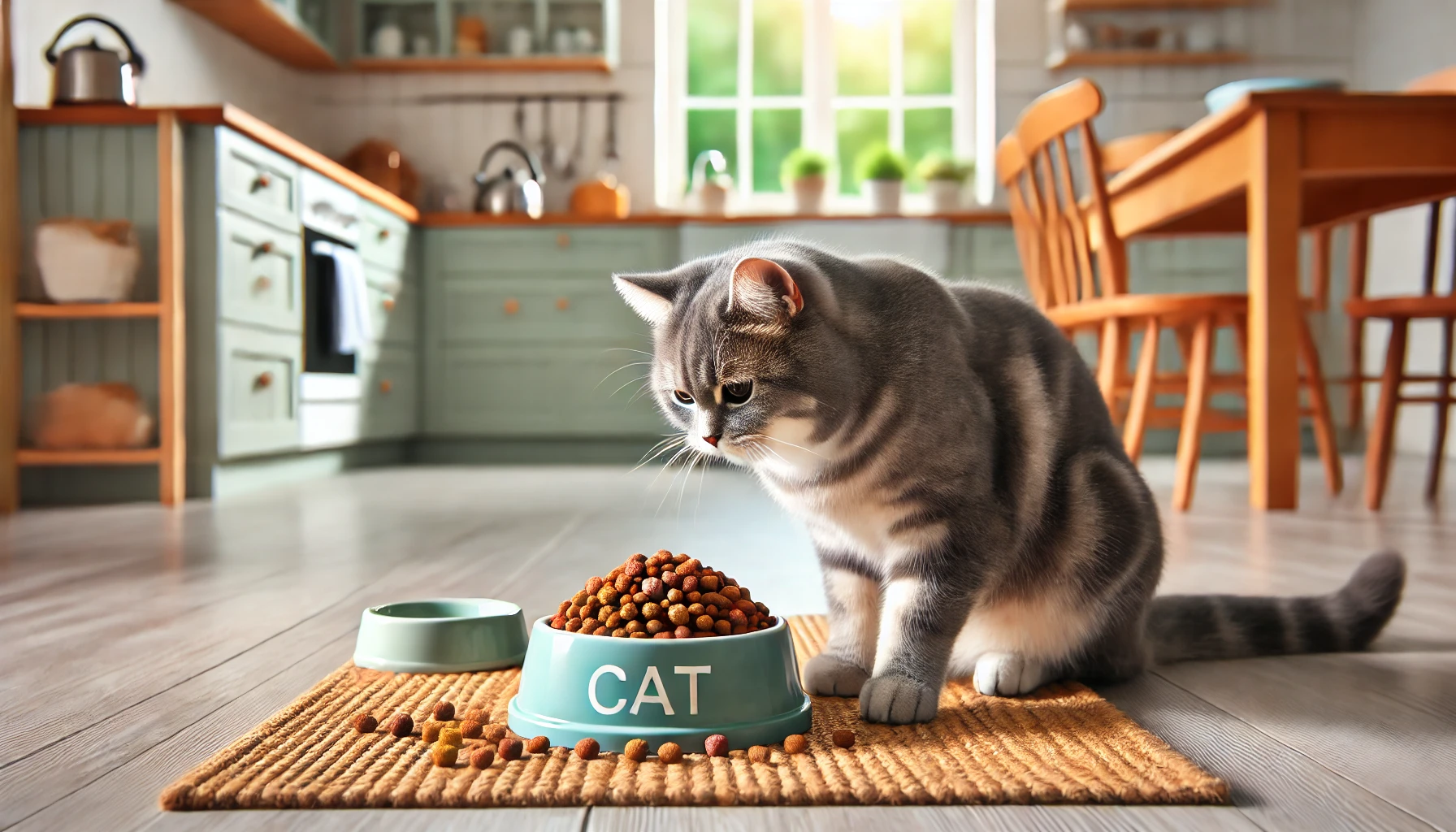
Dietary Needs for Tiffanies
Feeding your Tiffanie a balanced diet is essential for maintaining their health.
These cats require high-quality cat food with a good protein content and other essential nutrients.
To keep your Tiffanie healthy, follow these dietary guidelines:
- High protein content: Protein is vital for muscle growth and overall health, so choose a cat food that is rich in protein.
- Portion control: Tiffanie cats may overeat if given too much food, so controlling portions is key to avoiding obesity.
- Fresh water: Always provide fresh, clean water to prevent dehydration, especially if your cat primarily eats dry food.
- Consult with a vet: Your vet can provide personalized dietary recommendations based on your Tiffanie’s age, weight, and specific health needs.
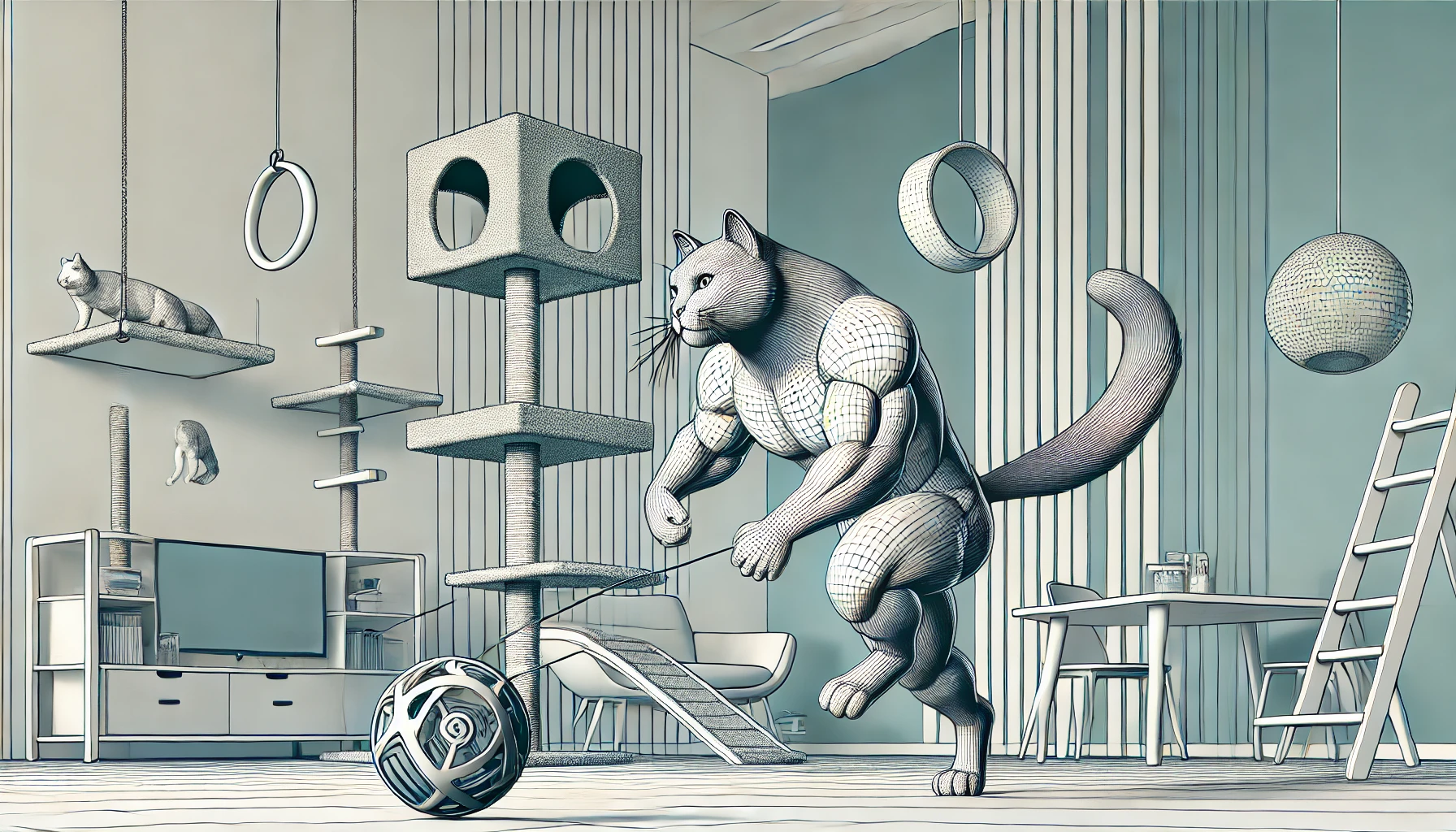
Exercise Requirements
Tiffanie cats are moderately active and require regular exercise to stay healthy.
Playtime is an excellent way to ensure that your cat is both mentally and physically stimulated.
Here are some exercise tips for your Tiffanie:
- Interactive toys: Offer toys that encourage your Tiffanie to run, jump, or pounce, which helps burn off excess energy.
- Climbing opportunities: Tiffanies are natural climbers, so providing cat trees or shelves gives them the chance to stay active and engaged.
- Play sessions: Dedicate part of each day to interactive play with your Tiffanie, which strengthens your bond and keeps them fit.
- Outdoor access: If safe, consider allowing supervised outdoor time or providing a secure cat enclosure for additional stimulation and exercise.
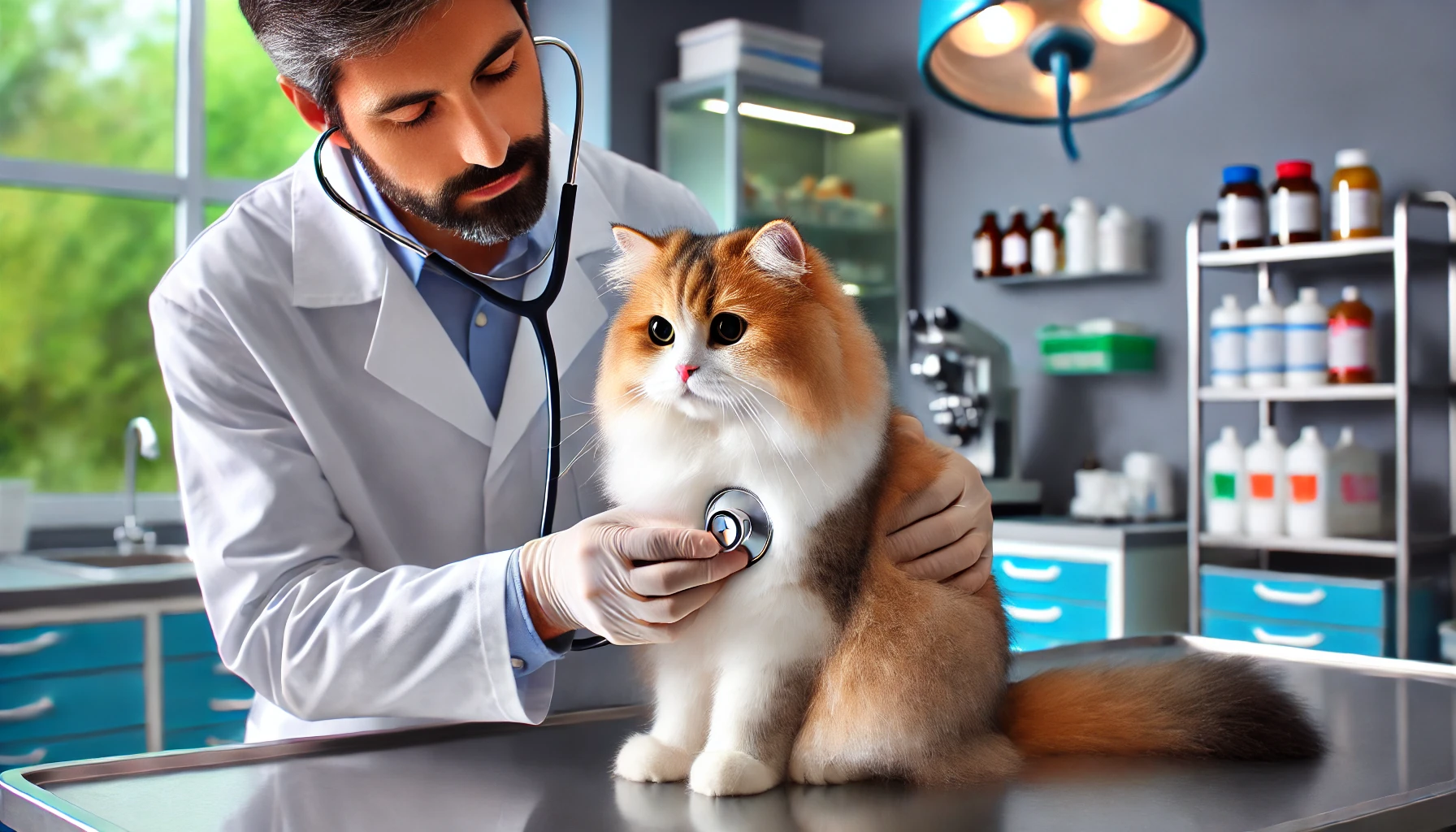
Preventative Care and Vet Visits
Regular vet visits are essential to keeping your Tiffanie cat healthy and thriving.
A veterinarian can monitor your cat’s health and catch minor issues before they become major problems.
Here are a few tips for preventative care:
- Annual check-ups: Your cat should have yearly vet visits to stay up to date on vaccinations and receive general health assessments.
- Dental care: Regular dental cleanings help prevent oral diseases like gingivitis.
- Parasite prevention: Use anti-flea, anti-tick, and anti-worm treatments as recommended by your vet to prevent common parasites.
- Vaccinations: Ensure your Tiffanie is up to date on vaccinations to protect against common feline diseases.
While generally healthy, Tiffanies can be prone to certain conditions such as dental disease and obesity. Regular check-ups are essential.
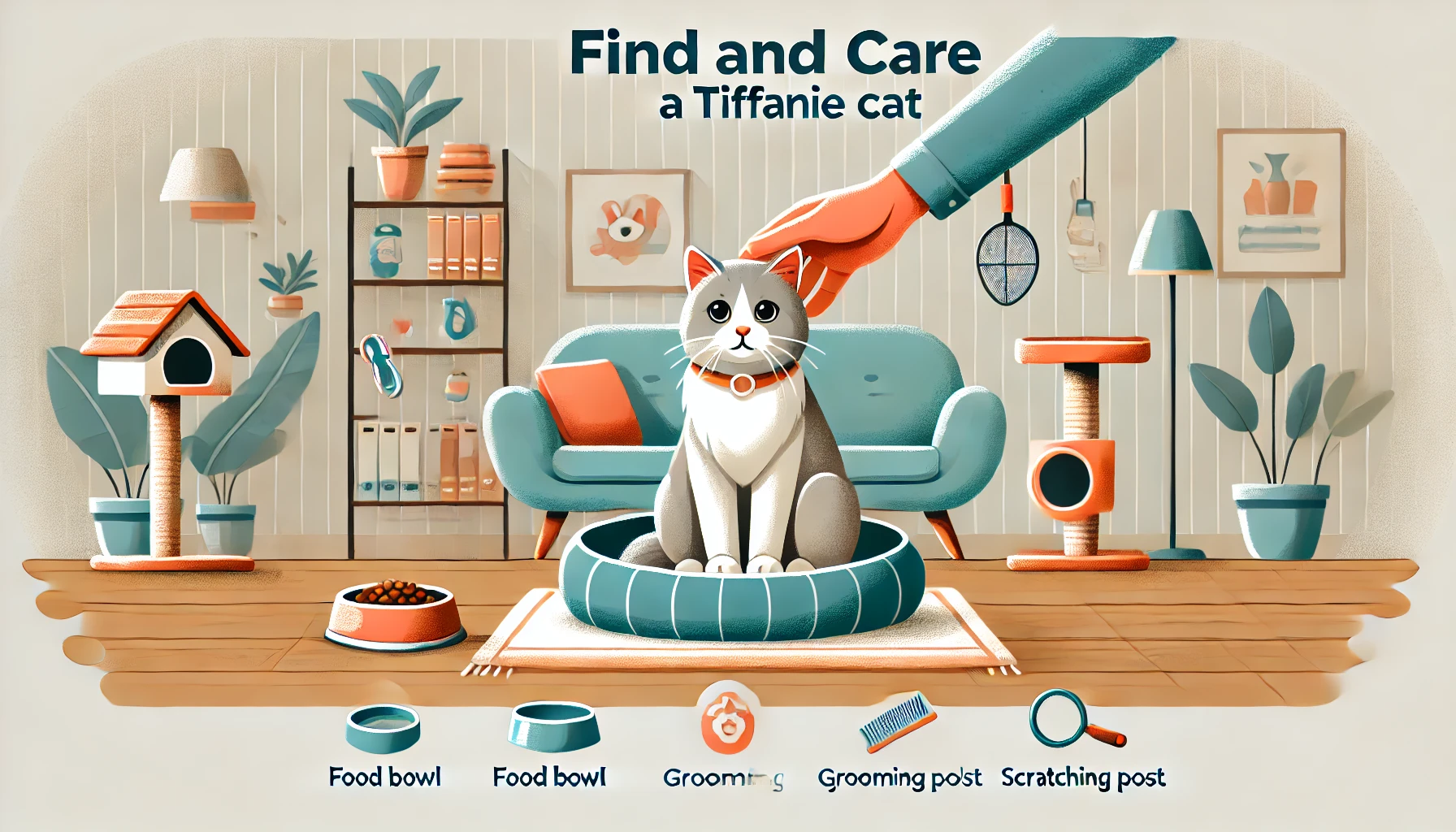
How to Find and Take Care of a Tiffanie Cat
The Tiffanie cat is a relatively rare breed, so finding one may require some research and patience.
Whether you are adopting or purchasing from a breeder, ensuring that your Tiffanie comes from a reputable source is crucial.
Proper care is also essential once you bring your Tiffanie cat home to help them adjust and thrive.
Here’s what you need to know about finding and caring for a Tiffanie cat.

Where to Adopt or Buy a Tiffanie
Given the rarity of the Tiffanie breed, you may not find them readily available at local shelters or rescue organizations.
Here are some effective ways to find a Tiffanie cat:
- Breeders: The most common source for acquiring a Tiffanie cat is through breeders who specialize in this breed. When choosing a breeder, ensure they have a good reputation and follow ethical breeding practices. Request health testing records and verify that their breeding cats have been screened for genetic disorders common to the breed.
- Rescue Organizations: Although rare, some rescue organizations focused on unusual breeds may have Tiffanie cats available for adoption. Regularly check the websites of breed-specific rescue groups to find potential matches.
- Pet Adoption Websites: Platforms such as Petfinder and Adopt-a-Pet occasionally list Tiffanie cats or similar breeds. It’s worth checking these sites regularly as availability can change frequently.
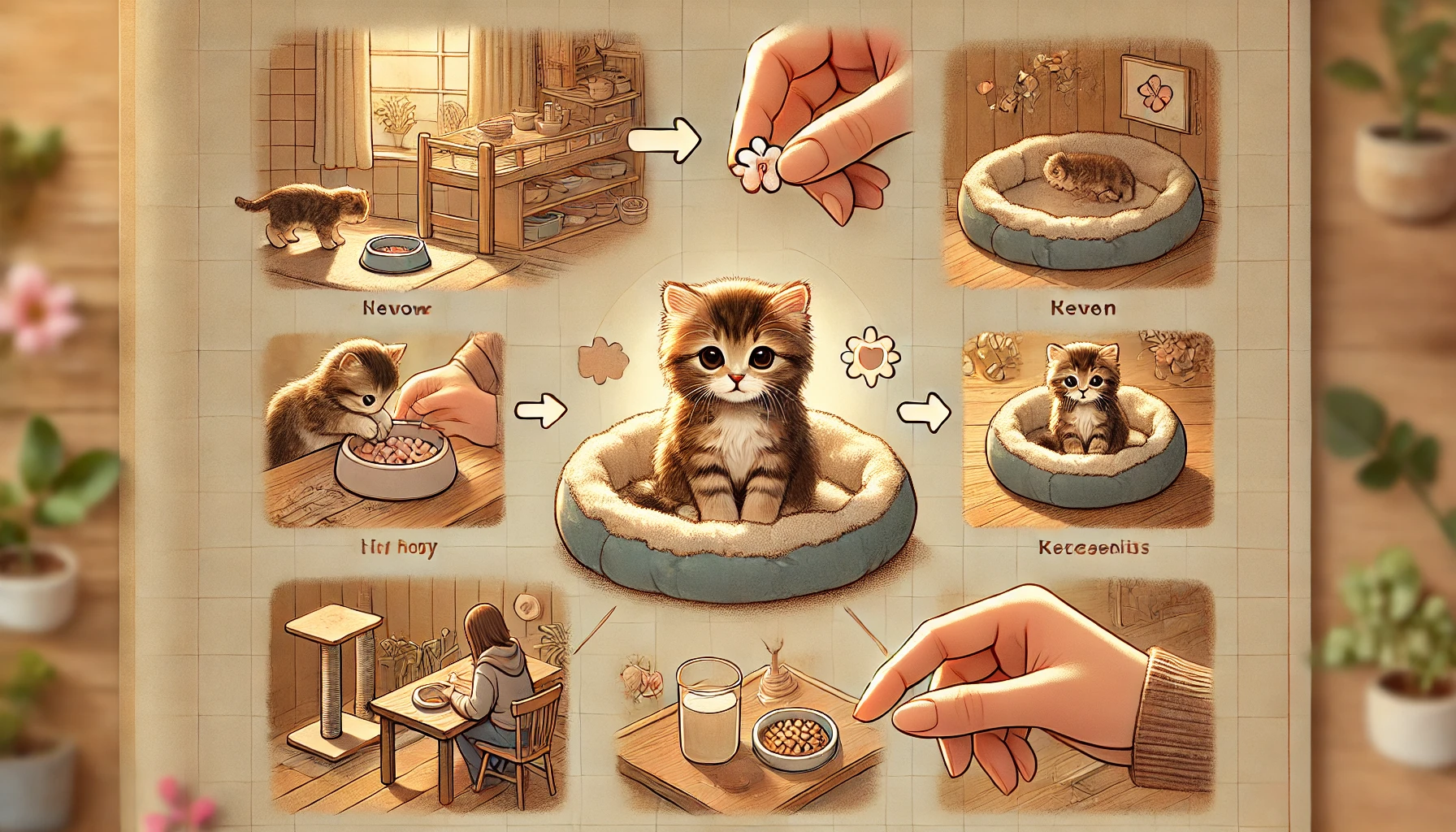
Raising a Tiffanie Kitten
Proper care and attention are crucial for ensuring that your Tiffanie kitten grows up healthy and happy.
Here are some tips for raising a Tiffanie kitten:
- Socialization: Begin socializing your Tiffanie kitten early to help them become comfortable with people and other pets. Introduce them to new experiences gradually and positively.
- Proper Nutrition: Feed your Tiffanie kitten high-quality kitten food that is rich in protein and essential nutrients. This will support their growth and development.
- Regular Vet Visits: Schedule regular check-ups with your vet to monitor your kitten’s growth and detect any health issues early.
- Playtime: Tiffanie kittens are active and playful. Provide plenty of toys and engage in interactive play to help them burn off energy and develop strong muscles.
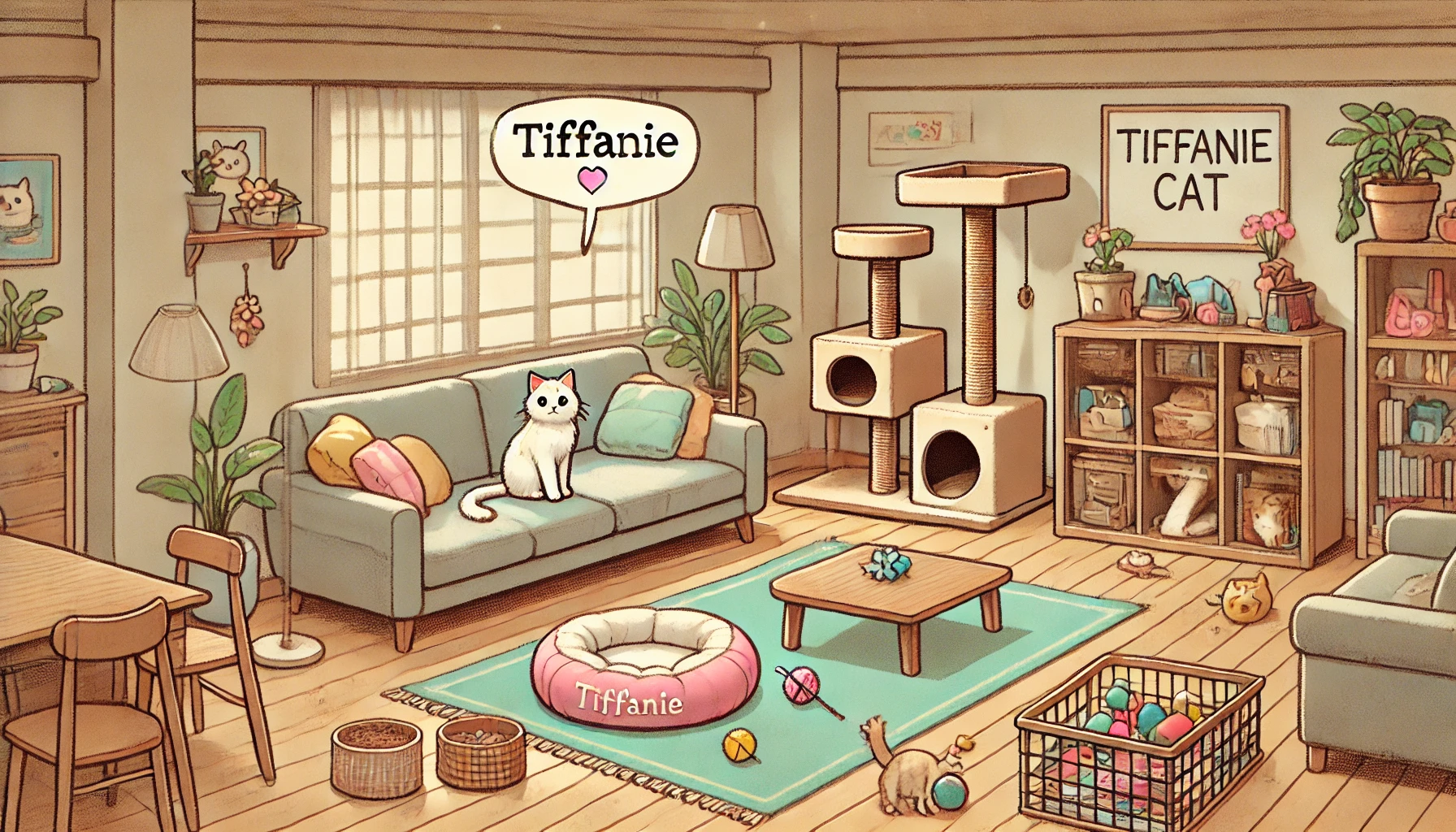
Preparing Your Home for a Tiffanie
Before bringing a Tiffanie cat into your home, it’s important to prepare your environment to meet their needs.
Here’s how to create a welcoming and safe space for your new feline friend:
- Create a Safe Space: Set up a quiet and comfortable area where your Tiffanie can retreat when they need rest or feel overwhelmed. This could be a cozy bed or a designated room.
- Provide Climbing Opportunities: Tiffanies enjoy climbing and exploring. Invest in a cat tree or shelves to satisfy their natural climbing instincts.
- Secure Your Home: Ensure that your home is cat-proofed by removing any hazardous items and securing toxic substances out of reach.
- Interactive Toys: Provide a variety of toys to keep your Tiffanie engaged and mentally stimulated.
By following these guidelines, you can help ensure that your Tiffanie cat will have a smooth transition into their new home and live a healthy, happy life.
Finding a Tiffanie cat can be a challenge due to their rarity. Proper care, including grooming and regular vet visits, ensures a healthy life for them.

Conclusion: Give Your Heart to the Tiffanie Cat
The Tiffanie cat is a well-rounded combination of good looks and a pleasant disposition, making this breed incomparable to any other cats.
With the depth of history backing the breed, along with distinct features and an affable nature, the Tiffanie is truly a remarkable companion for families and individuals alike.
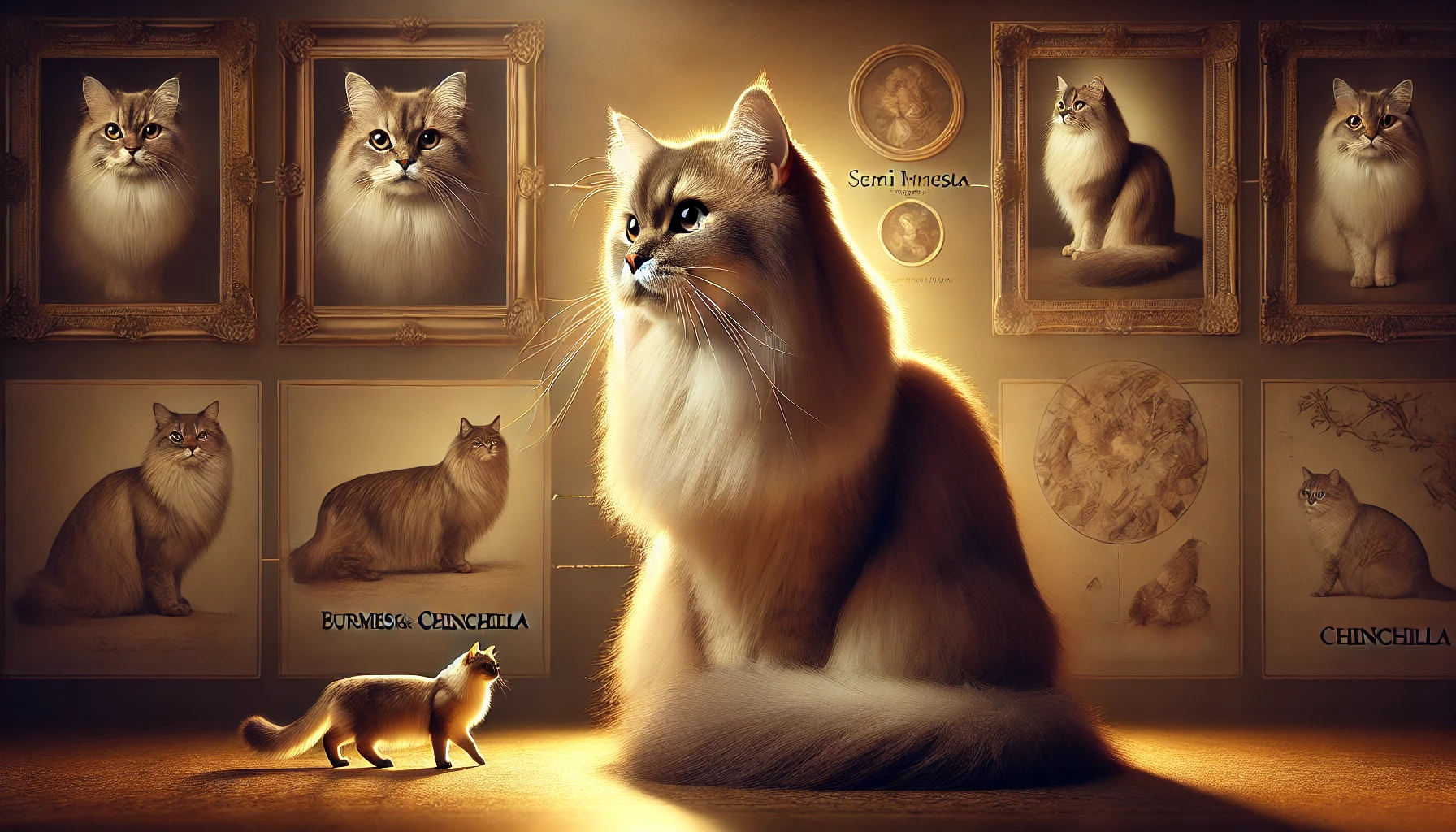
Appreciation for the Breed’s Origins and Development
An appreciation for the origins and development of the Tiffanie breed brings awareness to its unique character.
From its careful beginning as a deliberate marriage between Burmese and Chinchilla breeds, the Tiffanie is a semi-longhaired cat with striking eye color and a disposition that reflects the best traits of its ancestors.
This development of the breed balances careful attention to aesthetic beauty with personality, yielding a cat as loving as it is beautiful.
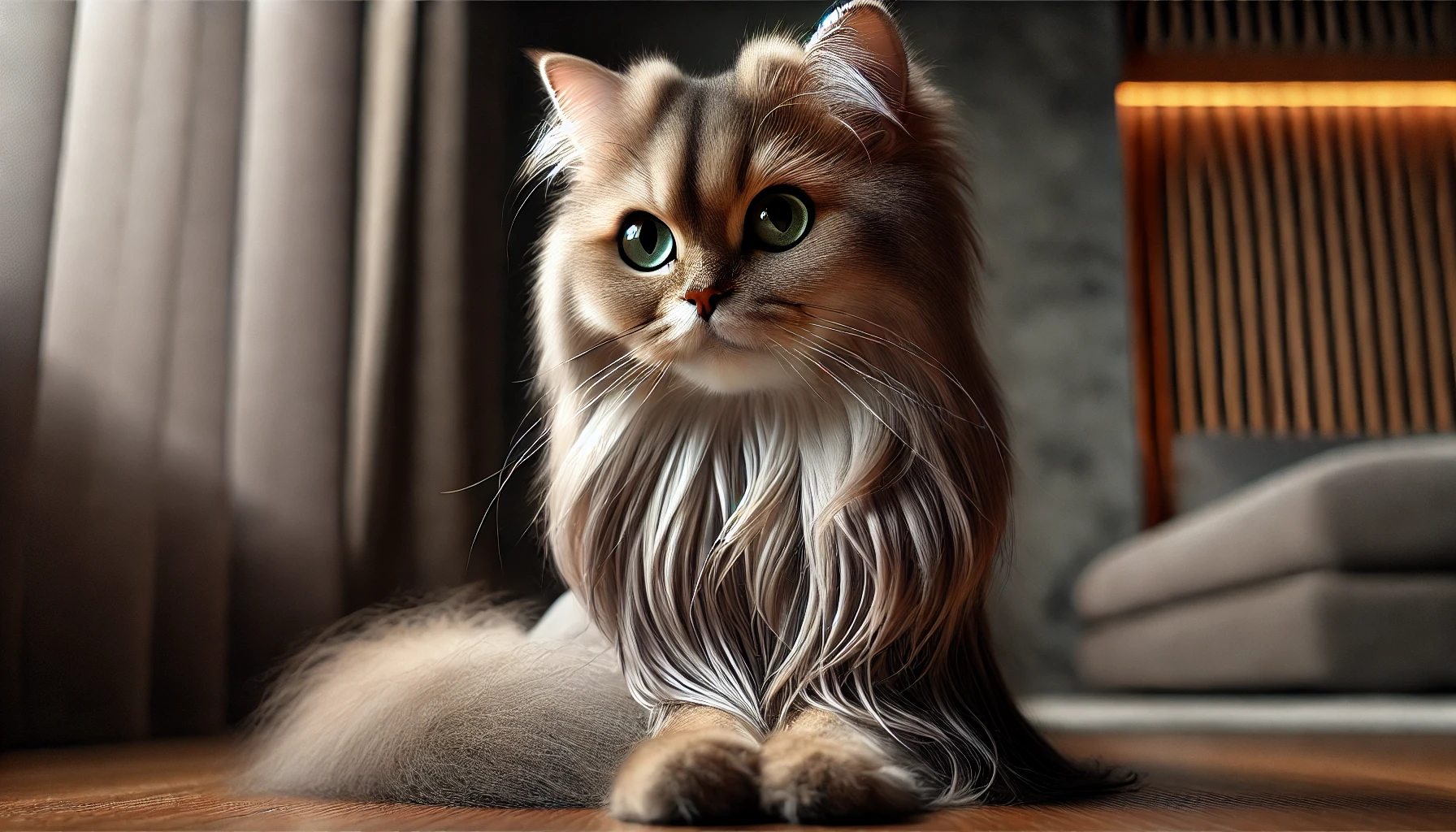
Physical Characteristics
The Tiffanie cat is truly a semi-longhaired breed and possesses a luxurious yet manageable coat.
These cats come in various colors and patterns, including rich browns and delicate lilacs.
Regular grooming is essential, not only for maintaining optimal health but also for ensuring that their beautiful fur continues to be a highlight of their appearance.
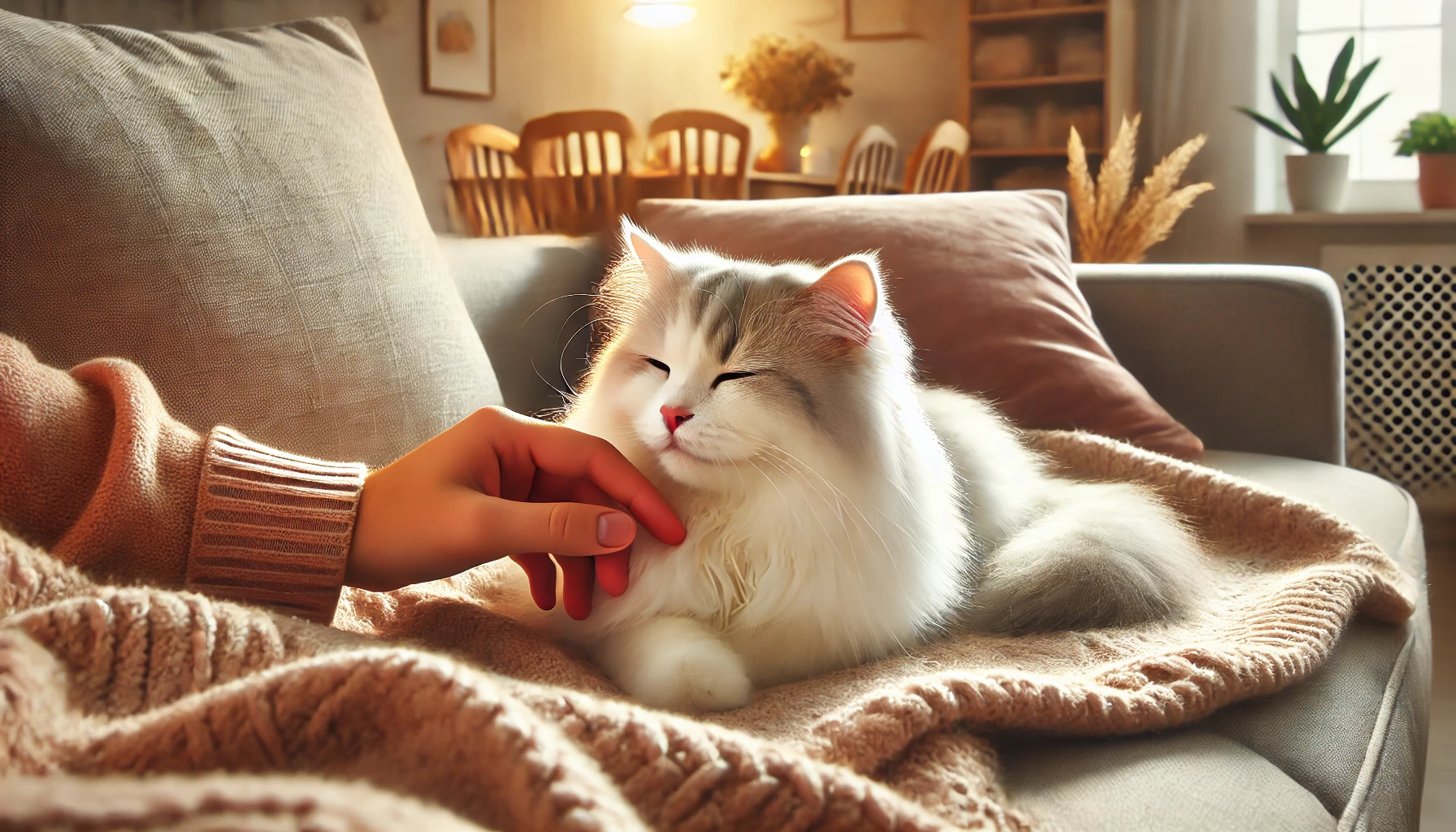
Personality and Temperament
The Tiffanie cat excels in personality: it is affectionate, tender, and social.
This makes them ideal for many families, as they bond well with humans and other pets in the home.
Tiffanies bring fun and warmth into their households, from playful antics to a laid-back demeanor.

Health Considerations
Generally, the Tiffanie breed is healthy, but it’s important to be aware of potential issues.
Common health concerns include dental disease, polycystic kidney disease (PKD), hypertrophic cardiomyopathy (HCM), and obesity.
Regular veterinary check-ups and proper nutrition are key to keeping your Tiffanie healthy and ensuring a long life.
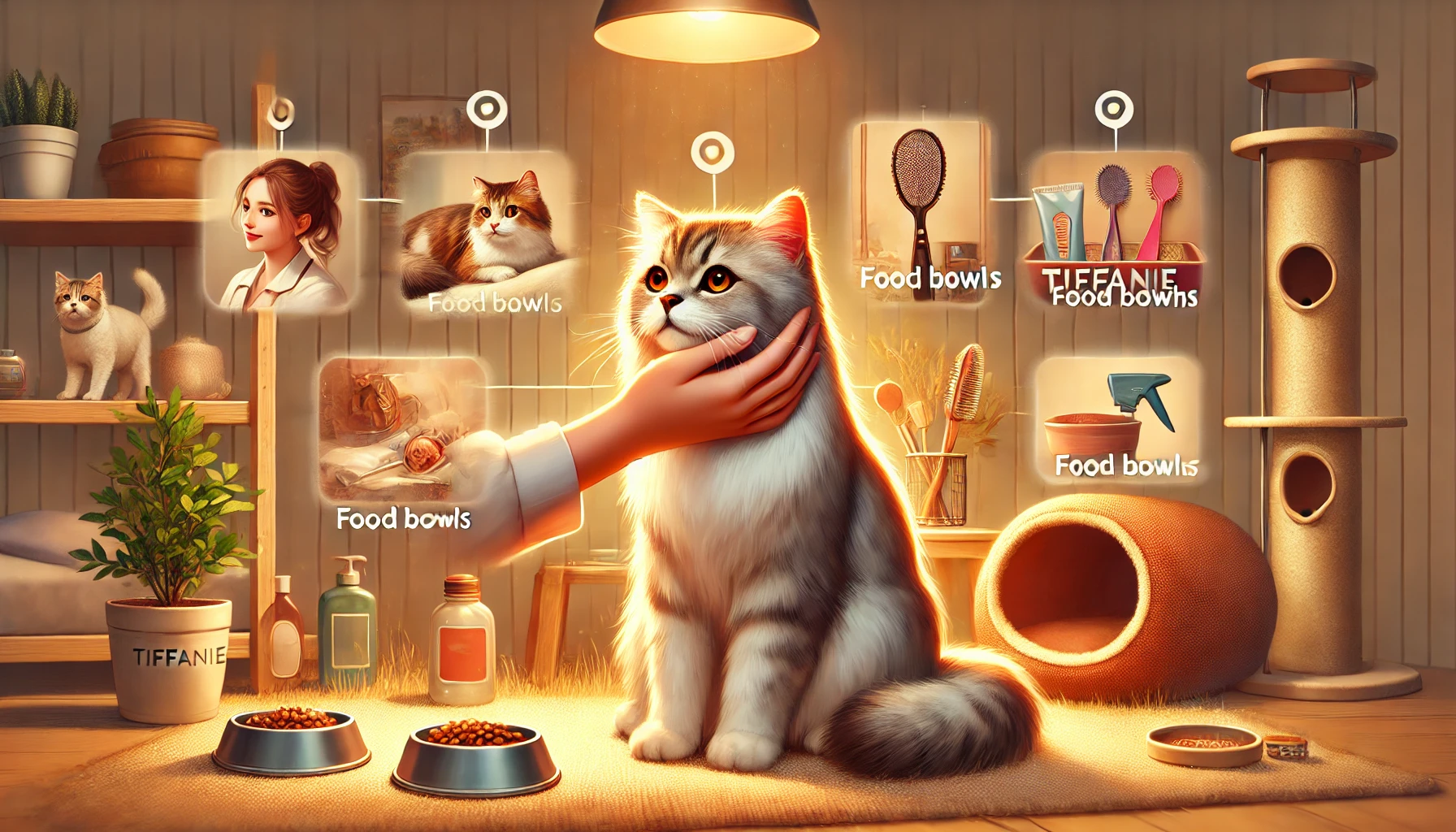
Finding and Caring for a Tiffanie
Finding a Tiffanie cat can be challenging due to its rarity.
You can start your search through reputable breeders, rescue organizations, or pet adoption websites.
Once you bring your Tiffanie cat home, proper care involves socializing them, providing nutritious food, and engaging in regular play.
Preparing your home to be safe and enriching will help your Tiffanie adjust well and thrive.
In short, the Tiffanie cat is a breed known for both its good looks and companionship.
With its distinctive appearance and affectionate nature, the Tiffanie will prove to be a wonderful addition to any home.
By understanding and meeting their needs, you can ensure that your Tiffanie cat leads a healthy and happy life.
The Tiffanie cat’s combination of beauty, personality, and health considerations makes it a truly unique and loving companion.
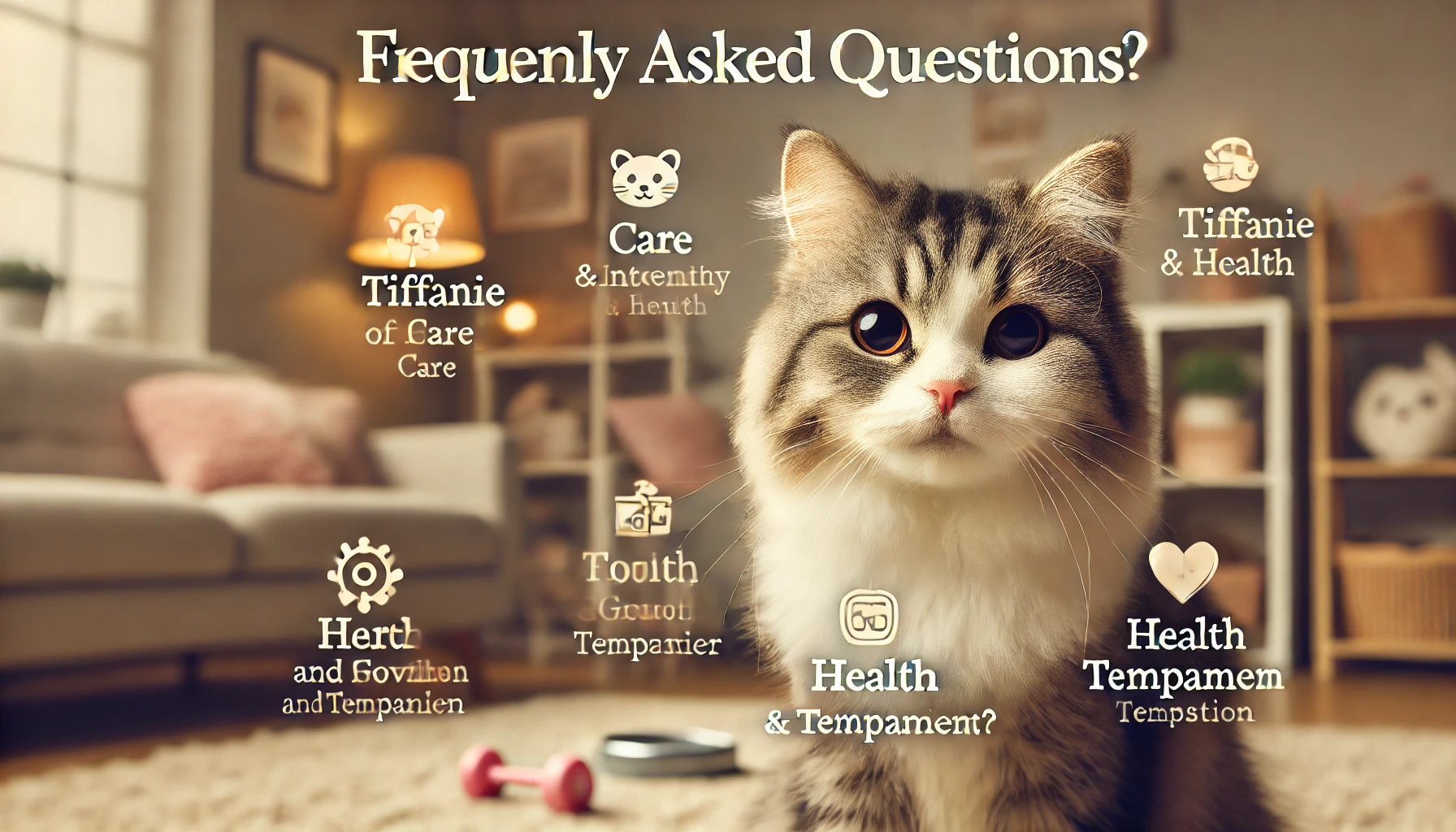
Frequently Asked Questions about Tiffanie Cats
Here are some of the most frequently asked questions regarding the Tiffanie cat.
This segment answers all the questions in as much detail as possible to help you get to know this particular breed.
What is a Tiffanie cat?
The Tiffanie cat is a semi-longhaired breed that combines the best traits of Burmese and Chinchilla cats.
It features a stunning appearance with a luxurious coat and a friendly, affectionate temperament.
Are Tiffanie cats good with children?
Yes, Tiffanie cats are generally very good with children.
They are affectionate, social, and gentle, making them great companions for families.
They enjoy interacting and playing with family members.
How do I groom a Tiffanie cat?
Grooming a Tiffanie cat involves regular brushing to prevent tangles and mats.
Their semi-longhaired coat needs maintenance with wide-tooth combs or slicker brushes to keep it in optimal condition.
What colors do Tiffanie cats come in?
Tiffanie cats come in various colors and patterns, including brown, blue, chocolate, lilac, and red or cream.
Their patterns may be shaded or tipped, adding to their unique appearance.
How active is a Tiffanie cat?
Tiffanie cats are moderately active.
They enjoy engaging in interactive play and games but also love to lounge and relax.
Providing regular playtime helps them expend energy and maintain muscle tone.
Where can I find a Tiffanie cat?
Finding a Tiffanie cat can be challenging due to their rarity.
Look for reputable breeders, rescue organizations, or pet adoption websites.
Patience and persistence are key in locating this unique breed.
What type of diet should I provide for a Tiffanie cat?
The ideal diet for a Tiffanie cat includes high-quality cat food with high protein content and essential nutrients.
Proper portion control and access to fresh water are crucial for their health.
How do I acclimate my Tiffanie to her new home?
To help a Tiffanie adjust to a new home, provide a safe, quiet space where they can retreat if needed.
Gradual socialization and having their favorite toys available will ease their transition into the new environment.

